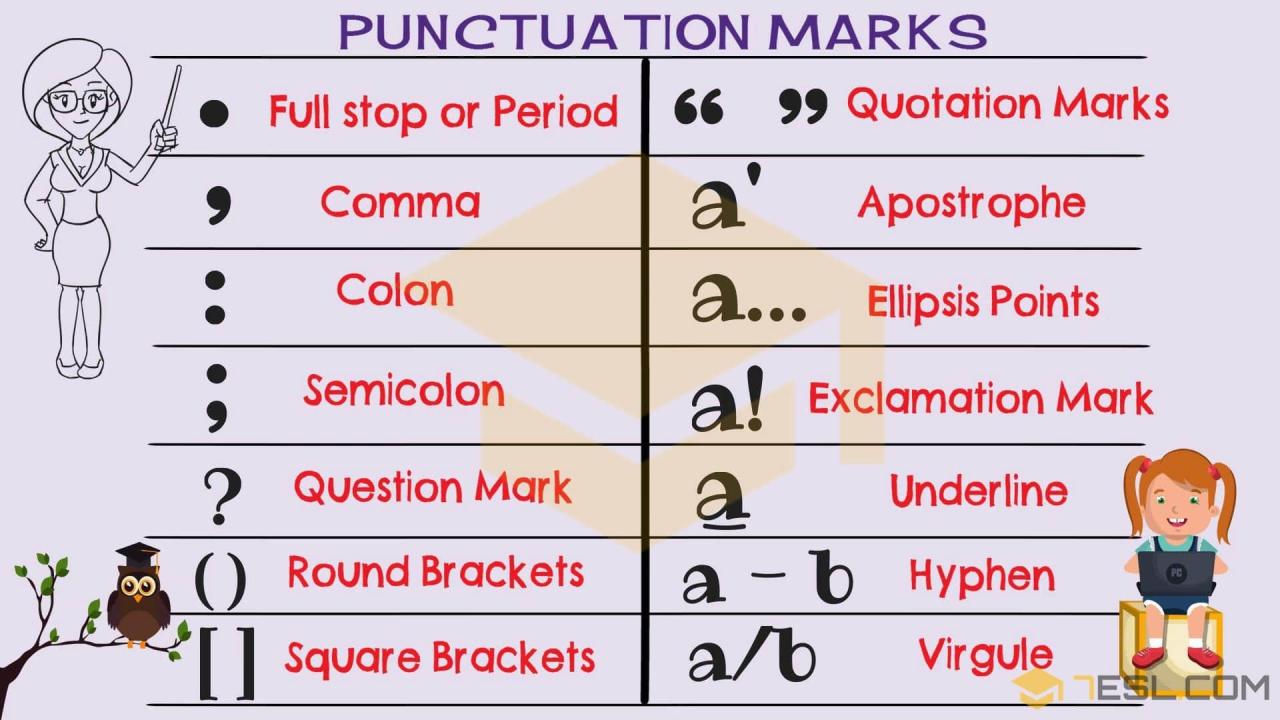Which punctuation mark is typically not used in business writing? The answer, surprisingly, isn’t always clear-cut. While most punctuation serves to clarify meaning, the exclamation point (!) often finds itself on the chopping block in professional communication. Its informal and overly enthusiastic tone clashes with the generally neutral and objective style favored in business. This exploration delves into why the exclamation point is often avoided, exploring suitable alternatives and illustrating their correct usage in various business contexts. We’ll examine the impact on clarity and professionalism, offering practical examples and a visual approach to mastering this subtle yet significant aspect of business writing.
The overuse of exclamation points can undermine your credibility, making your writing seem unprofessional or even childish. Subtlety and precision are key in business communication, and excessive exclamation points disrupt this carefully constructed image. Understanding when to use them – or, more often, when to avoid them – is crucial for effective communication. This guide provides the necessary tools and knowledge to navigate this punctuation challenge with confidence.
Identifying the Problematic Punctuation Mark
The exclamation point (!), while common in casual conversation and expressive writing, is generally avoided in formal business writing. Its overuse can detract from the professionalism and objectivity expected in business communication. The judicious use of punctuation is crucial for conveying a clear and concise message, and the exclamation point often undermines this goal.
The avoidance of exclamation points stems from the perception that they convey excessive emotionality or a lack of seriousness. In professional contexts, maintaining a neutral and objective tone is paramount. Using exclamation points can suggest enthusiasm or urgency, which may be inappropriate or even perceived as unprofessional depending on the context. Furthermore, overuse can make the writing appear less credible and more informal, potentially damaging the sender’s reputation and undermining the overall message’s impact. A well-crafted sentence, relying on strong word choice and clear structure, is far more effective in conveying importance than an exclamation point.
Formal Versus Informal Usage of Exclamation Points
In informal writing, such as personal emails, text messages, or social media posts, exclamation points are frequently used to express excitement, emphasis, or surprise. For example, a text message might say, “I got the job! I’m so excited!” This usage is perfectly acceptable in informal settings. However, in formal business communications, such as formal letters, reports, or proposals, the exclamation point is generally avoided. A formal letter would instead state something like, “I am pleased to inform you that I have accepted the position.” The difference lies in the desired tone and the level of formality required by the communication’s purpose and audience. The formal version maintains a professional, objective tone, while the informal version clearly expresses personal feelings. This difference highlights the importance of adapting one’s writing style to the specific context.
Alternatives and Best Practices

The exclamation point (!), while conveying strong emotion in casual settings, often comes across as unprofessional and overly assertive in business communication. Replacing it with alternative punctuation and phrasing ensures a tone that remains confident yet maintains a professional demeanor. This section Artikels suitable alternatives and demonstrates their effective use in various business contexts.
The key to replacing exclamation points lies in choosing phrasing that conveys the intended level of emphasis without resorting to forceful punctuation. This often involves a careful selection of words, sentence structure, and appropriate punctuation marks like periods, commas, or colons. The context of the communication significantly influences the best alternative.
Alternative Punctuation and Phrasing, Which punctuation mark is typically not used in business writing
Replacing exclamation points requires a nuanced approach, adapting to the specific business context. In emails, a calm and professional tone is crucial. Reports and memos necessitate precision and clarity, while presentations might allow for slightly more expressive language, albeit still maintaining professionalism. The following table illustrates suitable replacements in different scenarios.
| Original Sentence (with !) | Business Context | Revised Sentence (without !) | Rationale |
|---|---|---|---|
| “This project is a huge success!” | Email to a client | “This project has been highly successful.” | Maintains a positive tone without being overly effusive. |
| “The deadline is tomorrow!” | Memo to team members | “The deadline is tomorrow. Please ensure all tasks are completed.” | Provides additional context and avoids a potentially panicky tone. |
| “Our sales figures are incredible!” | Report to senior management | “Our sales figures have exceeded expectations.” or “Our sales figures demonstrate significant growth.” | Uses more formal and objective language. |
| “We’ve launched a new product!” | Presentation slide | “We are pleased to announce the launch of our new product.” | Maintains professionalism while still conveying excitement. |
Impact on Clarity and Professionalism
The excessive or inappropriate use of exclamation points (!) in business writing significantly detracts from clarity and professionalism. While occasional use might be acceptable in informal settings, their overuse creates a jarring tone, undermining the credibility and authority of the writer. The impact extends beyond simple aesthetics; it directly affects how the reader perceives the message and the sender.
Overuse of exclamation points often conveys a sense of unprofessional enthusiasm or even desperation, rather than conveying confidence and competence. It can make the writing seem childish, overly emotional, or even manipulative, thus diminishing the impact of the message and potentially damaging the sender’s reputation. The reader may question the writer’s judgment and professionalism, impacting the overall effectiveness of the communication.
Effects on Reader Perception and Credibility
The choice of punctuation profoundly influences the reader’s perception of the writer’s credibility. A document riddled with exclamation points suggests a lack of control and a potential inability to communicate effectively in a formal context. This can lead to a loss of trust and a diminished perception of the writer’s expertise. Conversely, writing that is concise, clear, and employs punctuation appropriately projects an image of competence, professionalism, and authority. Readers are more likely to trust and respect a writer who demonstrates mastery of the written word.
Examples of Misinterpretations Due to Improper Exclamation Point Use
Consider the following examples to illustrate the potential for misinterpretations:
* Example 1: “Our new product is amazing! It will revolutionize the industry!” This sentence, while enthusiastic, might be perceived as hyperbolic and lacking in substance. A more professional approach would be: “Our new product offers significant advancements and promises to reshape industry practices.”
* Example 2: “Please submit your report by Friday! Failure to do so will result in disciplinary action!” This sentence, while conveying urgency, comes across as aggressive and potentially threatening. A more measured approach would be: “Please ensure your report is submitted by Friday to avoid potential delays.”
* Example 3: “We’re thrilled to announce our partnership with Acme Corp.! This collaboration will unlock unprecedented opportunities!” While positive, the multiple exclamation points weaken the impact and create an overly effusive tone. A more refined approach would be: “We are pleased to announce our partnership with Acme Corp., a collaboration that promises significant opportunities.”
These examples demonstrate how the excessive use of exclamation points can transform a professional message into something less credible and potentially offensive. The key is to use punctuation strategically to enhance, not detract from, the overall message. Subtlety and precision in language and punctuation are paramount in business writing.
Illustrative Examples in Different Business Documents: Which Punctuation Mark Is Typically Not Used In Business Writing

Proper punctuation is crucial for clear and professional communication in all business contexts. The absence of unnecessary punctuation, particularly the excessive use of exclamation points, contributes significantly to a more polished and credible image. The following examples demonstrate how correct punctuation enhances readability and professionalism across various business documents.
The examples below illustrate effective punctuation choices in different business communication formats. Each example highlights the importance of precision and clarity in conveying information professionally. Note the absence of excessive exclamation points, which can undermine professionalism.
Email Examples
Emails, being a primary form of business communication, require concise and accurate language. Overuse of exclamation points can make an email seem unprofessional and overly enthusiastic.
- Subject: Meeting Confirmation
Dear Mr. Jones,
This email confirms our meeting scheduled for Friday at 2 PM. Please let me know if you have any questions. Sincerely, [Your Name] - Subject: Project Update
Dear Team,
This email provides a brief update on the Alpha Project. We are currently on schedule and anticipate completion by the deadline. We will hold a follow-up meeting next week to discuss the next phase. Regards, [Your Name]
Business Letter Examples
Formal business letters demand precise and grammatically correct language. Punctuation plays a vital role in maintaining a professional tone.
- Formal Complaint Letter
Dear Sir/Madam,
I am writing to formally complain about the substandard service I received on [date]. I request a full refund for the defective product. Sincerely, [Your Name] - Letter of Recommendation
To Whom It May Concern,
I am pleased to recommend [Candidate Name] for the position of [Position]. During their time at [Company Name], they consistently demonstrated exceptional skills in [Skills]. I highly recommend them without reservation. Sincerely, [Your Name]
Report Examples
Reports, especially those for executive audiences, require meticulous attention to detail, including punctuation. Clear and concise writing enhances readability and ensures the report’s credibility.
- Financial Report Excerpt
The company’s net income for the quarter was $1.5 million, a 10% increase compared to the previous quarter. This positive trend is largely attributed to increased sales in the Asian market. - Market Analysis Report Excerpt
The current market trends indicate a growing demand for sustainable products. Consumers are increasingly prioritizing environmentally friendly options, leading to significant growth in the green sector.
Visual Representation of Correct Usage

A visual representation can significantly enhance understanding of punctuation rules, especially for those who find grammar challenging. By employing a combination of visual elements and clear examples, a training tool can effectively illustrate the appropriate use of alternative punctuation marks in business writing, replacing the problematic overuse of the exclamation point.
A helpful visual could take the form of a series of panels, each depicting a different business writing scenario. Each panel would feature a before-and-after comparison: the left side showcasing incorrect usage (overuse of exclamation points), and the right side displaying the revised sentence with appropriate punctuation (periods, commas, semicolons, etc.). The visual differences would be emphasized through color-coding (e.g., incorrect punctuation in red, correct punctuation in green) and clear font size variations. Under each panel, concise explanations would clarify the reason for the change and highlight the improved clarity and professionalism. For instance, one panel might show an email subject line changing from “Urgent! New Project! Action Needed!” to “Urgent: New Project—Action Needed.” The visual difference would clearly show how the revised version is more professional and less jarring.
Use of Visual Aids in Employee Training
This visual aid, composed of panels demonstrating correct and incorrect punctuation, would be highly effective in employee training sessions. The before-and-after comparisons make the impact of correct punctuation immediately apparent. Trainers could use the panels to lead discussions, prompting employees to identify the errors and explain the rationale behind the corrections. Interactive elements, such as quizzes or group exercises based on the visuals, could further solidify learning and provide immediate feedback. The visual nature of the aid would cater to different learning styles, ensuring comprehension for a broader range of employees. The panels could be easily incorporated into presentations, online training modules, or printed handouts for reference.
Flowchart Design for Punctuation Selection
A flowchart would provide a step-by-step guide for choosing the appropriate punctuation mark in various business writing contexts. The flowchart would begin with a central question: “What is the purpose of this sentence/phrase?” Branching paths would then lead to subsequent questions based on the answer. For example, if the purpose is to connect two closely related independent clauses, the flowchart would lead to a decision point for semicolons or commas with conjunctions. If the purpose is to list items, the path would direct the user to the correct use of commas or semicolons in lists. Each decision point would include examples illustrating the correct usage. The final outcome of each path would be the appropriate punctuation mark, accompanied by a brief explanation of its function. The flowchart’s visual structure would facilitate easy navigation and decision-making, guiding users towards the most appropriate punctuation choice for any given situation. This systematic approach would streamline the punctuation selection process and improve consistency in business writing.






